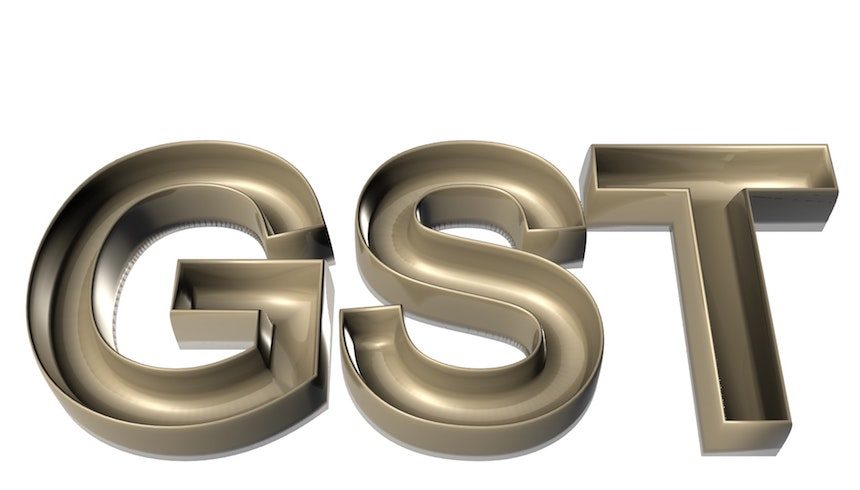Introduction to GST:
Goods and Service Tax (GST) is the biggest indirect tax reforms since independence. Before implementation of GST, all states had their own VAT laws for local sales. Excise was applicable on manufacturing of goods, and service tax was applicable on services, both of which were collected by the Central Government.
After implementation of GST, professionals and traders faced a lot of problems due to the drastic changes in the law causing confusion in the minds of people regarding the payment of tax and return forms. Government acknowledged these hardships and brought about many changes and amendments in the law to ease the procedure and remove confusion in the minds of the people.
Recent Changes in GST:
Given below is a compiled list of recent changes made in GST rules and their impact on businesses.
(A) Change in the manner of setting off Input Tax credit
With effect from 1st February 2019, CGST Amendment Act came into force. This Amendment Act inserted Section 49A. Section 49A states that first of all input tax credit of IGST should be utilized for payment of IGST, CGST and SGST/UTGST. After that only input tax credit of CGST, SGST/UTGST will be utilized.
Another newly inserted section 49B states that government may prescribe the order and manner of utilization of the input tax credit subject to Section 49A.
CBIC issued Central Goods and Services Tax (Second Amendment) Rules, 2019 via Notification No. 16/2019 dated 29th March 2019. In this amendment rules, Rule 88A is inserted which states that input tax credit of IGST shall first be utilized for payment of IGST and then it can be used for payment of CGST and SGST/UTGST in any order.
This provision will give a big relief to persons who purchase goods from outside the state but make sales within the state. Previously, their CGST input tax credit remained unutilized and thus funds got blocked.
For example – A registered person has following figures
| Amount Payable | Input Tax Credit | |
| IGST | 500 | 900 |
| CGST | 500 | 400 |
| SGST | 1000 | 700 |
| Set off with old rules prior to 1st Feb 2019 | |||||
| Output | Amount | Input Tax Credit | Payable | ||
| IGST | CGST | SGST | |||
| IGST | 500 | 500 | 0 | ||
| CGST | 500 | 100 | 400 | 0 | |
| SGST | 1000 | 300 | 700 | 0 | |
After new section 49A became effective, a question arose as to whether after utilization of IGST input for IGST, whether it should be used first for CGST and then for SGST? If that is the case, then many persons face a problem.
| Set off with new rules if IGST is first to be utilized for CGST | |||||
| Output | Amount | Input Tax Credit | Payable | ||
| IGST | CGST | SGST | |||
| IGST | 500 | 500 | 0 | ||
| CGST | 500 | 400 | 100 | 0 | |
| SGST | 1000 | 700 | 300 | ||
Now, with the introduction of Rule 88A, the position is changed and a person may first utilize input of IGST for SGST payment as well. This will not lead to accumulation of CGST credit or block funds.
| Set off with new rules if IGST can be utilized for SGST or CGST in any order | |||||
| Output | Amount | Input Tax Credit | Payable | ||
| IGST | CGST | SGST | |||
| IGST | 500 | 500 | 0 | ||
| CGST | 500 | 100 | 400 | 0 | |
| SGST | 1000 | 300 | 700 | 300 | |
(B) GSTN Advisory to start a new series of Invoices for new financial year:
GSTN has issued an advisory to GST taxpayers to start a new invoice series, unique for each financial year. If not followed then the taxpayers may face issues while generating e-way bills or while filing GSTR-1 or at the time of applying for the refund.
The advisory is as under:
“Attention of all taxpayers is invited to Rule 46 (b) of the CGST Rules 2017, which specifies that the tax invoice issued by a registered person should have a consecutive serial number, not exceeding sixteen characters, in one or multiple series, containing alphabets or numerals or special characters – hyphen or dash and slash symbolized as “-” and “/” respectively, and any combination thereof, unique for a financial year.”
This rule implies that with the start of new financial year 2019-20 (w.e.f. 01/04/2019), a new invoice series, unique for the financial year is to be started by the GST taxpayers. Similar provision is there in Rule 49 of the CGST Rules 2017, in respect of issue of Bill of Supply by registered taxpayers availing Composition Scheme or supplying exempted goods or services or both.
If the provisions of Rule 46 or Rule 49 are not adhered to, apart from being a compliance issue, taxpayers may face problem while generating E-Way Bill on E-way bill system or furnishing their Form GSTR-1, or for applying for refund on GST Portal. It is therefore necessary that suitable modification may be made by the taxpayers in this regard in their invoices or bill of supply, to avoid any inconvenience in the future.”
But this advisory also raises certain questions, like, First, what is the meaning of a new invoice series? Does new invoice series mean that the first invoice of a financial year should be one? Second, Rule 46(b) states that invoice number should be unique for a financial year and it does not mention that new series need not always start from No.1. More clarifications should be issued by GSTN.
(C) Changes in E-way bill generation
GSTN issued an update regarding changes in the e-way bill generation system. The date of applicability is not given. The changes are as under
1) Distance will be auto-calculated on basis of PIN code – The distance between source and destination will be auto-calculated on the basis of PIN code. The distance can be changed by user but it can be increased only by 10% of the auto-calculated distance. In case, source PIN and destination PIN are same, the user can enter up to a maximum of 100 kms only.
2) E-way bill with same document number will not be allowed – Once E-way Bill is generated with an invoice number, then none of the parties – consignor, consignee or transporter, can generate another E-Way Bill with the same invoice number.
3) Extension of E-Way Bill in case Consignment is in Transit – Now the validity of e-way bill can be extended if the goods are in transit. System will ask whether the consignment is in transit or in movement. On selection of in transit, the address details of the transit place need to be provided by the user. On selection of in movement, the system will prompt the user to enter place and vehicle details.
4) Composition dealers cannot issue inter-state e-way bill – Composition dealers cannot generate an e-way bill for inter-state movement of goods. Document type of tax invoice will not be enabled for composition dealers.
For a detailed step-by-step guide on e–Way Bill Generation check out E-way bill – The Complete Guide.
Conclusion:
A number of changes are made from time to time in GST in order to formulate a definitive plan for effective implementation of GST. It is very important to keep up with the recent changes so as to comply with the changing rules, and grow one’s business successfully, otherwise the registered person may have to pay a hefty penalty. In fact, in case of non-compliance with e-way bill, the vehicle carrying the goods can also be detained or seized until the appropriate tax and penalty specified by the concerned officer is paid.
Payment of fine or seizure of vehicle would cause a disruption to normal operations of business, affect the business reputation negatively, lay financial burden on the company, and lead to initiation of action by the authorities on other GST assessments. So, keeping oneself abreast with the changes in the GST rules is of utmost importance.
Guest Post by Umesh Joshi
Picture Courtesy: Pexels







